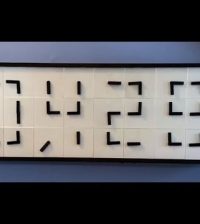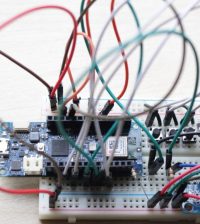- How to Adjust X and Y Axis Scale in Arduino Serial Plotter (No Extra Software Needed)Posted 1 month ago
- Elettronici Entusiasti: Inspiring Makers at Maker Faire Rome 2024Posted 1 month ago
- makeITcircular 2024 content launched – Part of Maker Faire Rome 2024Posted 4 months ago
- Application For Maker Faire Rome 2024: Deadline June 20thPosted 5 months ago
- Building a 3D Digital Clock with ArduinoPosted 10 months ago
- Creating a controller for Minecraft with realistic body movements using ArduinoPosted 11 months ago
- Snowflake with ArduinoPosted 11 months ago
- Holographic Christmas TreePosted 11 months ago
- Segstick: Build Your Own Self-Balancing Vehicle in Just 2 Days with ArduinoPosted 12 months ago
- ZSWatch: An Open-Source Smartwatch Project Based on the Zephyr Operating SystemPosted 1 year ago
Magic in Reality- A Small Car Controlled by Electroencephalogram(EEG)

Electroencephalography (EEG) measures bioelectrical activity in the brain – specifically bio-electrical signals generated by the cerebral cortex nerve cells. The tricky point here is to use those signals to control a small robot car.
1. The EEG sensor receives a signal
In order to detect the EEG signals from other noise, we need a reference electrode and a grounded circuit. Grounding the electric circuit enables a bioelectric signal roughly equal to the voltage of a regular pair of headphones.
2. A small car controlled by the EEG
By putting the EEG electrodes onto your forehead, you can send signals including those interfering ones in the surrounding environment to the sensor. A common-mode rejection algorithm is used to filter the interfering noise so as to detect the EEG signals. The signals are then transferred to the controller to make the small car move forward.
3. Controlling direction
The left-right rotating mechanism is realized by a triaxial accelerometer. By judging the rotating speed of the car head, you can decide where it is heading. This triaxial I2C communication mode is simple and convenient. The size is also small (20*20mm), allowing the platform to be easily controlled.
The Transmitting Circuit
By putting the EEG electrodes onto your forehead, you can send signals including those interfering ones in the surrounding environment to the sensor. A common-mode rejection algorithm is used to filter the interfering noises so as to detect brainwave signals. Brainwave signals are then transferred to the controller to make the small car move forward.
The left-right rotating mechanism is realized by the triaxial accelerometer. By judging the rotating speed of the car head, we can decide where it is heading.
Receiving Circuit
This controller is fully open source, inherits all the functions of the RoMeo controller, integrates Bluetooth 4.0 wireless communication technology as well as DC motor drivers.
The circuit controls the motor’s movement by receiving signals through the Bluetooth.
More details and diagram: Magic in Reality- A Small Car Controlled by Electroencephalogram(EEG)















